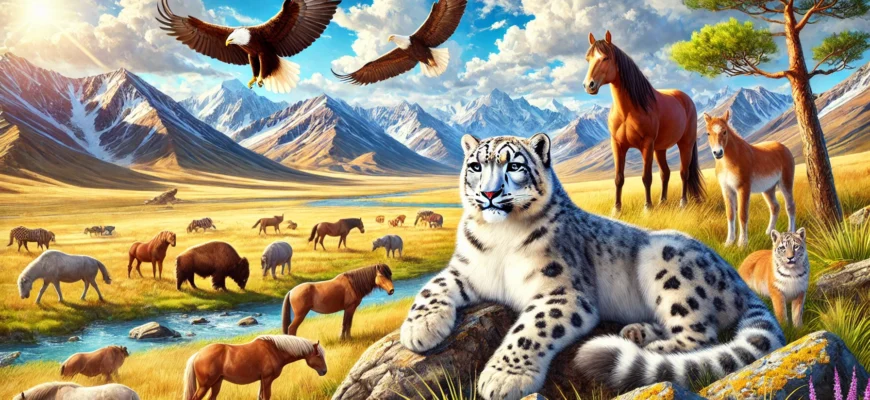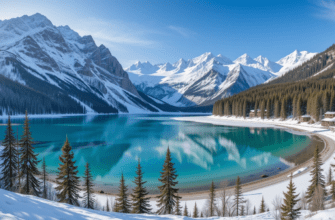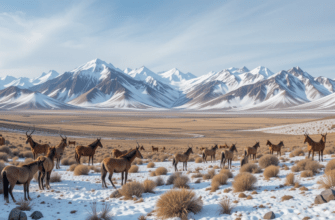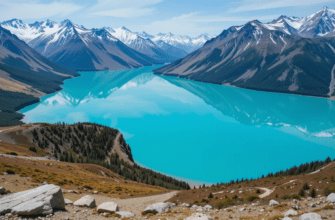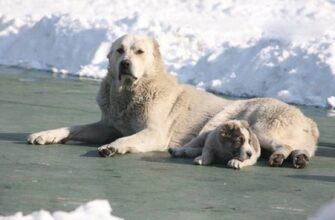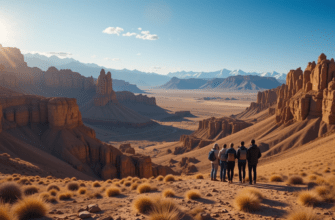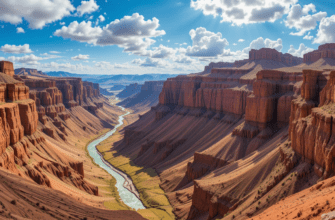- Key Highlights
- Introduction
- The Majestic Wildlife of Kazakhstan
- Introduction to Kazakhstan’s Unique Ecosystems
- How Geography Influences Biodiversity
- Iconic Mammals of the Kazakh Steppes and Mountains
- Snow Leopard: Ghost of the Mountains
- The Przewalski Horse: Wild Equine of the Plains
- The Avian Spectrum: Birds of Kazakhstan
- Pink Flamingos of the Alakol Basin
- Raptors of the Tien Shan: Eagles and Falcons
- Freshwater and Aquatic Life
- Sturgeons of the Caspian: A Caviar Source
- The Siberian Crane’s Wintering Grounds
- Reptiles and Amphibians in the Kazakh Deserts and Wetlands
- Central Asian Tortoise: A Desert Dweller
- The Ephemeral Lives of Kazakhstan’s Frogs
- Conservation Efforts for Endangered Species
- Protecting the Snow Leopard: Conservation Strategies
- The Saiga Antelope: From the Brink of Extinction
- The Role of National Parks and Reserves
- Altyn-Emel National Park: A Sanctuary for Biodiversity
- Ile-Alatau National Park: Preserving Alpine Ecosystems
- Eco-Tourism and Wildlife Watching in Kazakhstan
- Guidelines for Responsible Wildlife Watching
- Best Times and Locations for Wildlife Sightings
- Conclusion
- Frequently Asked Questions
- What is the most endangered animal in Kazakhstan?
- Can tourists participate in conservation efforts?
- What are the best national parks for wildlife spotting?
- How has climate change affected wildlife in Kazakhstan?
- Are there any unique birdwatching opportunities in Kazakhstan?
- Insights into the Future of Kazakhstan’s Wildlife and Conservation Efforts
Key Highlights
- Kazakhstan, situated in Central Asia, boasts diverse ecosystems, from towering mountains to vast steppes, fostering a rich array of animal life.
- The country harbors rare and endangered creatures, including the elusive snow leopard and the majestic saiga antelope.
- Birdwatchers can delight in spotting a vibrant avian population, with notable species like the pink flamingo and the steppe eagle.
- Kazakhstan’s waters teem with life, featuring the iconic sturgeon, a source of prized caviar, and serving as crucial wintering grounds for the Siberian crane.
- National parks and reserves play a crucial role in protecting Kazakhstan’s wildlife, offering opportunities for eco-tourism and responsible wildlife watching.
Introduction
Kazakhstan is located in Central Asia and is famous for its amazing wildlife. The country has large grasslands, high mountains, and clear lakes, making it a home for many different animals. In this blog, we will go on a virtual safari. We will take a look at the wildlife of Kazakhstan and the efforts to protect its beautiful nature for the future.
The Majestic Wildlife of Kazakhstan
Kazakhstan has many different places, from the snowy high peaks of the Tian Shan to the dry lands of the Kazakh Steppe. The wildlife of Kazakhstan has learned to live in these tough areas. Because of this variety in landscapes, there are many unique animals that each have interesting stories.
This mix of creatures is not just pretty to look at; it shows how strong life can be. It is also important for keeping a healthy ecosystem. As we explore the wild parts of Kazakhstan, we will learn about the lives and challenges of these animals. We will see why they matter in this amazing part of the world.
Introduction to Kazakhstan’s Unique Ecosystems
Kazakhstan has stunning views that are more than just pretty. They support many different ecosystems. There are many habitats in the country, each home to different types of life. For example, the high-altitude alpine meadows found in the mountain ranges, such as the Tian Shan, are homes for the rare snow leopard and the swift ibex.
The Kazakh Steppe, which is one of the largest grasslands on Earth, is filled with the calls of the steppe eagle. This eagle has sharp eyes that search the land for prey. On the other hand, the clear waters of the Caspian Sea are full of special water life, including the ancient sturgeon, which is a living piece of history.
Across these different areas, there are many nature reserves that protect Kazakhstan’s natural beauty. These special places help safeguard vulnerable species and show visitors the amazing nature in Kazakhstan.
How Geography Influences Biodiversity
The geographic features of Kazakhstan are very important for its amazing variety of animals. The country goes from the Tien Shan mountains in the southeast to the Caspian Sea in the west. This wide range of landscapes affects the different types of animals that live there.
The Tien Shan mountains act as a natural barrier. They change how much rain falls and the temperatures in the area. This allows many animals to adapt to different heights and weather. On the other hand, the Caspian Sea is the largest inland body of water on the planet. It has a unique ecosystem with special species, like the Caspian seal.
The way geography and climate work together has created a surprising range of animals in Kazakhstan. You can find snow leopards in the high mountains and seals in the Caspian Sea. This shows how closely linked the land is with the life found there.
Iconic Mammals of the Kazakh Steppes and Mountains
The vast steppes and tall mountains of Kazakhstan are home to many amazing animals. The saiga antelope, known for its big, round nose, can be seen moving through the tall grasses. Their migrations create unforgettable sights for those lucky enough to watch them.
In the higher, rocky areas, the snow leopard is the top predator. Its thick fur helps it stay warm in the cold winds. These animals, each suited to their home, show the true nature of the Kazakh wilderness.
Snow Leopard: Ghost of the Mountains
High in the Tien Shan mountains, the snow leopard roams among the tall peaks and rocky ground. This beautiful cat has a soft, grey coat and striking blue eyes. It is very good at hiding, blending in with the snowy hills and rocky areas of its home high up in the mountains.
Unfortunately, snow leopards are now endangered. Their numbers are going down because of habitat loss and poaching. But, there are efforts in Kazakhstan to help save these amazing cats. National parks like Ile-Alatau National Park are important places for protecting snow leopards.
In these safe areas, researchers watch the snow leopards closely. They track the animals to check their numbers and learn how they behave. This important work helps global efforts to save this special species. Their dedication gives hope for the snow leopard’s future in Kazakhstan.
The Przewalski Horse: Wild Equine of the Plains
Across the wide Kazakh steppe, a small group of wild horses wanders free. Their manes flow in the wind. These horses are Przewalski’s. They are the last truly wild horses on our planet. They were once extinct in the wild, but now they are coming back because of hard work in conservation.
They were brought back to safe places in Kazakhstan, like Altyn-Emel National Park. These strong animals are slowly getting back to their original home. The steppe, filled with endless grass, is the perfect place to see these amazing horses in the wild.
Watching a group of Przewalski’s horses run across the plains shows us how important conservation is. It also reminds us why we need to protect wild animals and their homes.
The Avian Spectrum: Birds of Kazakhstan
Kazakhstan has many different landscapes, and they are not just for mammals. The skies are full of a wide variety of birds. You can see mighty eagles gliding in the air and groups of flamingos turning the wetlands pink. The birdlife in Kazakhstan is a sight that amazes both bird lovers and everyday people.
If you are a serious birdwatcher or just someone who enjoys nature, Kazakhstan gives you a memorable chance to see the lively world of its birds.
Pink Flamingos of the Alakol Basin
The Alakol Basin is a group of lakes in eastern Kazakhstan. During migration season, the lakes turn pink. This is because thousands of pink flamingos come to these shallow, saltwater lakes. Their bright colors are reflected in the water. It creates a stunning view. This shows how different ecosystems are connected across the world.
These birds come to the Alakol Basin because there is plenty of food like brine shrimp. This food helps make them bright pink. When they arrive, the area becomes lively and attracts many nature lovers. They come from all around to see this amazing event.
It’s very important to protect this key spot for migrating birds. The Alakol Basin is a UNESCO Biosphere Reserve. This means it is important for protecting a wide range of plants and animals around the world.
Raptors of the Tien Shan: Eagles and Falcons
The Tien Shan Mountains are known for their tall peaks and open valleys. They are home to many amazing birds of prey. One of them is the golden eagle. This eagle can have a wingspan of up to 7 feet. It flies high above the slopes with ease. Its sharp eyes let it see prey from far away.
Another impressive bird is the saker falcon. This falcon flies above the Tien Shan as a skilled hunter. It is famous for its fast dives. The body of the saker falcon is sleek, and its strong wings help it move at high speeds when chasing its prey.
Seeing these raptors fly is an amazing sight. It shows the strength and beauty of these birds. Watching them in their natural environment highlights the balance of life, even in tough places like the Tien Shan Mountains.
Freshwater and Aquatic Life
Kazakhstan has many freshwater ecosystems full of life. The Caspian Sea is the largest inland body of water in the world. It is a safe place for many unique species. Rivers and lakes in Kazakhstan are home to different fish and are important stops for birds that migrate.
These freshwater ecosystems are important. They support both the animals living there and the many people who rely on them for food and water. Protecting these waters is essential for the environment and also for the well-being of communities.
Sturgeons of the Caspian: A Caviar Source
The Caspian Sea is a large inland sea that lies next to Kazakhstan in the west. It is home to a special kind of fish called sturgeon. Some of these fish have been around since the time of dinosaurs. They are best known for producing caviar, a luxury food liked all over the world. The Caspian Sea has several types of sturgeon, including the highly endangered beluga sturgeon, famous for its valuable caviar.
Sadly, sturgeon populations are declining due to overfishing and loss of their homes. Many people want caviar, and illegal fishing has harmed these ancient fish. Because of this, Kazakhstan has set strict rules to protect sturgeon, such as limits on fishing and fishing bans.
To save these amazing creatures, we must work together. Conservation efforts focus on stopping illegal hunting, rebuilding their habitats, and creating sustainable fishing methods for their survival in the Caspian Sea.
The Siberian Crane’s Wintering Grounds
As winter arrives in the northern hemisphere, something amazing happens in the skies above Kazakhstan. The Siberian crane, an endangered species, starts a long journey. It flies from its breeding grounds in Siberia to its winter home in Kazakhstan.
These beautiful birds are known for their pure white feathers and red crowns. They depend on the wetlands in the Saryarka Steppe and Lakes of Northern Kazakhstan to survive. These wetlands are important because they provide food and safe places to rest for the cranes during the cold winter months.
Protecting these wetlands is key to saving the Siberian cranes and many other migratory birds. Kazakhstan understands this importance. It has created several protected areas in these regions to offer safe places for these amazing birds and to help keep their vital wetland habitats safe.
Reptiles and Amphibians in the Kazakh Deserts and Wetlands
While many people think of mammals and birds when they picture Kazakhstan’s animals, we should not forget about reptiles and amphibians. These cold-blooded animals live in many different environments in the country. They show unique ways to adapt and survive in tough conditions.
From the dry deserts in the south to the wetlands scattered throughout the land, reptiles and amphibians are important to the complex life that makes Kazakhstan’s wildlife so interesting. In these less-explored areas, we can find amazing examples of how these creatures adapt and stay strong.
Central Asian Tortoise: A Desert Dweller
Amid the hot sands of Kazakhstan’s southern deserts, you can find a strong reptile called the Central Asian tortoise. It has a tough shell and moves slowly and carefully, which helps it survive in this tough place. It can handle very high and low temperatures and lives for a long time without water, making it a perfect fit for life in the desert.
These tortoises are herbivores, and they help their ecosystem by spreading seeds. This also keeps the plants healthy. Sadly, they face dangers like losing their homes and being captured illegally for the pet trade.
To protect these vulnerable reptiles, Kazakhstan has created national parks and reserves that include parts of their desert homes. It is important to raise awareness about the challenges they face, both locally and around the world, so that they can continue to survive.
The Ephemeral Lives of Kazakhstan’s Frogs
In contrast to dry deserts, the wetlands of Kazakhstan fill with sounds as frogs wake up from winter. These temporary homes burst with life during breeding season, becoming nurseries for new frogs.
Frogs, found among reeds and shallow water, play an important part in keeping nature healthy. They help control insect numbers and serve as food for other animals. Their presence shows how healthy these aquatic areas are.
Sadly, frogs in Kazakhstan face big threats from losing their homes because of drainage, pollution, and climate change. Understanding this, conservationists are working hard to watch frog populations. They aim to protect important breeding areas and spread awareness about the importance of frogs and the freshwater environments they need.
Conservation Efforts for Endangered Species
Kazakhstan understands how important its natural heritage is. The country is dedicated to protecting its wildlife, especially the species that are at risk of disappearing. They have put in place different strategies to help. This includes creating protected areas and fighting against poaching. Their goal is to keep their biodiversity safe for the future.
These actions often include teamwork among government bodies, conservation groups, and local people. They all work together to help the most vulnerable species in Kazakhstan survive. By joining forces, we can hope for a future where both wildlife and people can do well.
Protecting the Snow Leopard: Conservation Strategies
High in the mountains, the rare snow leopard is a symbol of the wild. However, it has an uncertain future. To help this endangered species, Kazakhstan is working hard to protect it. They have set up national nature parks like Ile-Alatau and Aksu-Zhabagly. These parks are important habitats for snow leopards.
Anti-poaching teams are important too. They patrol large areas, often in tough weather and rough terrain. Their job is to stop illegal hunting and protect snow leopards and their prey. Getting local communities involved is also key to conservation.
By teaching these communities about why saving snow leopards matters, they are starting to work together. Initiatives like livestock insurance are helping reduce losses caused by snow leopards hunting livestock. Conservationists want to create a sense of shared responsibility among people to help ensure a bright future for this amazing animal.
The Saiga Antelope: From the Brink of Extinction
The saiga antelope, known for its big, round nose, was nearly extinct. However, it has bounced back in Kazakhstan. In the early 2000s, it was put on the Critically Endangered list by the IUCN. Thanks to tough conservation efforts, the number of saiga antelope has increased.
Stricter laws against poaching have helped a lot. There are now higher penalties and more patrols to stop the illegal hunting of saiga for their horns. These horns are sold for use in traditional medicine in some parts of Asia. Along with land restoration programs and careful population monitoring, these actions have let the saiga antelope slowly come back.
The story of the saiga antelope shows how teamwork in conservation can make a real difference. It gives hope not just for this species but for all endangered species around the world. Still, we must stay alert and keep working hard in conservation to ensure saiga antelope do not face extinction again.
The Role of National Parks and Reserves
Kazakhstan’s national parks and reserves protect the country’s natural heritage. These areas include many different ecosystems, like mountain ranges and wetlands. They offer a safe home for many plants and animals. Some of these species are endangered or vulnerable.
Besides helping to conserve nature, these parks are important for scientific research, environmental education, and sustainable tourism. They give people unique chances to enjoy the beauty of Kazakhstan’s wild places while also helping to keep them safe.
Altyn-Emel National Park: A Sanctuary for Biodiversity
Altyn-Emel National Park is in the heart of southeastern Kazakhstan. It shows the country’s effort to protect its natural resources and unique wildlife. This large park has many landscapes, from tall mountains to singing sand dunes. It is a safe home for many types of animals.
You can see the elegant goitered gazelle running across the fields. You might also spot the rare Przewalski’s horse eating in its new home. The lakes and rivers are lively with many colorful birds. Other mammals like wolves, foxes, and different rodents also live in the park. This shows how rich its ecosystem is.
Altyn-Emel National Park is key for protecting biodiversity. It also gives visitors a chance to enjoy the stunning beauty of Kazakhstan’s nature. You can admire the impressive views, visit historical sites, or watch wildlife in their natural surroundings. A visit to Altyn-Emel will stay in your mind for a long time.
Ile-Alatau National Park: Preserving Alpine Ecosystems
Ile-Alatau National Park sits in the Trans-Ili Alatau mountain range, near the busy city of Almaty. It is a special place for unique alpine life. This park has high peaks, shining glaciers, green forests, and beautiful meadows with many types of plants and animals.
The snow leopard, a rare and secretive animal, lives high in this park. Ile-Alatau is a paradise for nature lovers and wildlife photographers. You can also find other animals here, like ibex, marmots, and many kinds of birds. This shows how all forms of life connect in this delicate environment.
Besides its importance for nature, Ile-Alatau offers fresh air for both visitors and locals. There are hiking trails that go through its different landscapes. These trails give amazing views and let you see the wild parts of the Tien Shan mountains.
Eco-Tourism and Wildlife Watching in Kazakhstan
Kazakhstan has amazing biodiversity and cares about conservation. This makes it a great place for eco-tourism and responsible wildlife watching. It has many national parks and reserves where you can enjoy nature and help with conservation.
If you choose eco-friendly tour operators, follow local rules, and consider the well-being of the wildlife, you can have unforgettable experiences. You will also make a positive impact on Kazakhstan’s natural treasures.
Guidelines for Responsible Wildlife Watching
Engaging in eco-tourism and responsible wildlife watching in Kazakhstan helps ensure that future generations can enjoy seeing these animals in their natural homes. The Ministry of Ecology, Geology, and Natural Resources of Kazakhstan highlights how important it is to travel responsibly in protected areas.
Here are some tips for a great wildlife-watching experience:
- Keep a Safe Distance: Use binoculars or cameras with zoom lenses to watch wildlife from far away. Don’t approach or try to feed the animals; keep your distance to help them feel safe and act naturally.
- Minimize Your Footprint: Stick to marked trails to protect plants and animal habitats. Take back everything you bring in, throw away your waste properly, and leave no sign of your visit.
- Respect Local Culture: Learn about local customs and traditions, along with any specific wildlife rules, before you go.
By following these responsible travel steps, you help support the well-being of Kazakhstan’s unique wildlife and their environments.
Best Times and Locations for Wildlife Sightings
Planning your wildlife-watching trip in Kazakhstan at the right times and places can make your experience more memorable. Here’s a simple guide to help you enjoy watching wildlife:
Spring (April-May):
- What to See: Look out for migratory birds, like flamingos and cranes, arriving in wetlands and lakes. Great spots include Alakol Lake and Tengiz-Korgalzhyn National Park.
- Best National Park: Visit Altyn-Emel National Park to see blooming desert landscapes and goitered gazelles.
Summer (June-August):
- What to See: The plains are full of grazing saiga antelope, especially in central Kazakhstan’s steppes and reserves like Irgiz-Turgay.
- Best National Park: Ile-Alatau National Park offers hiking in beautiful alpine scenery, where you might also spot a snow leopard.
Autumn (September-October):
- What to See: Experience the rutting season of red deer in the forests of the Altai and Tien Shan mountains.
- Best National Park: Check out Karkaraly National Park for amazing fall colors and the chance to see Siberian ibex.
Don’t forget to ask local guides or park staff for updates on wildlife sightings and rules for the areas you plan to visit.
Conclusion
Kazakhstan has a rich variety of wildlife. You can see unique animals like the rare Snow Leopard and the colorful Pink Flamingos. The country’s different ecosystems are full of life. Conservation efforts are very important because they help protect endangered species like the Saiga Antelope. National parks such as Altyn-Emel are safe places for these amazing creatures. Eco-tourism allows you to see these wonders in a responsible way. Explore the beauty of Kazakhstan’s wildlife and share your thoughts below. Let’s come together to celebrate and protect the natural heritage that makes Kazakhstan special.
Frequently Asked Questions
What is the most endangered animal in Kazakhstan?
The saiga antelope is on the IUCN Red List as Critically Endangered. It is one of the most endangered animals in Kazakhstan. Its population has been hurt by losing its habitat and by poaching for its horns.
Can tourists participate in conservation efforts?
Yes, tourists can help conservation by engaging in eco-tourism. They should pick responsible operators and follow local rules. Some groups give chances to volunteer in areas like wildlife research, community activities, or environmental education projects.
What are the best national parks for wildlife spotting?
Altyn-Emel, Ile-Alatau, and Karkaraly National Parks are famous for seeing wildlife. These parks have different types of habitats. Going on guided tours can make your visit even better. You will learn more from expert guides.
How has climate change affected wildlife in Kazakhstan?
Climate change has changed habitats. This change affects how species move and breed. Conservationists have a hard time dealing with the effects of rising temperatures and changing rain patterns on at-risk species.
Are there any unique birdwatching opportunities in Kazakhstan?
Kazakhstan is on an important path for birds during migration. This attracts many bird species. Alakol Lake and Tengiz-Korgalzhyn are great places for birdwatching. They are home to flamingos, cranes, and other water birds. The country also has unique bird species. This draws bird experts from around the world.
Insights into the Future of Kazakhstan’s Wildlife and Conservation Efforts
Kazakhstan’s future environmental policy will focus on three main goals. First, it will work on expanding protected areas. Second, it will strengthen measures to prevent poaching. Lastly, it will implement new conservation projects. International teamwork and creating wildlife corridors are also very important for lasting success.

